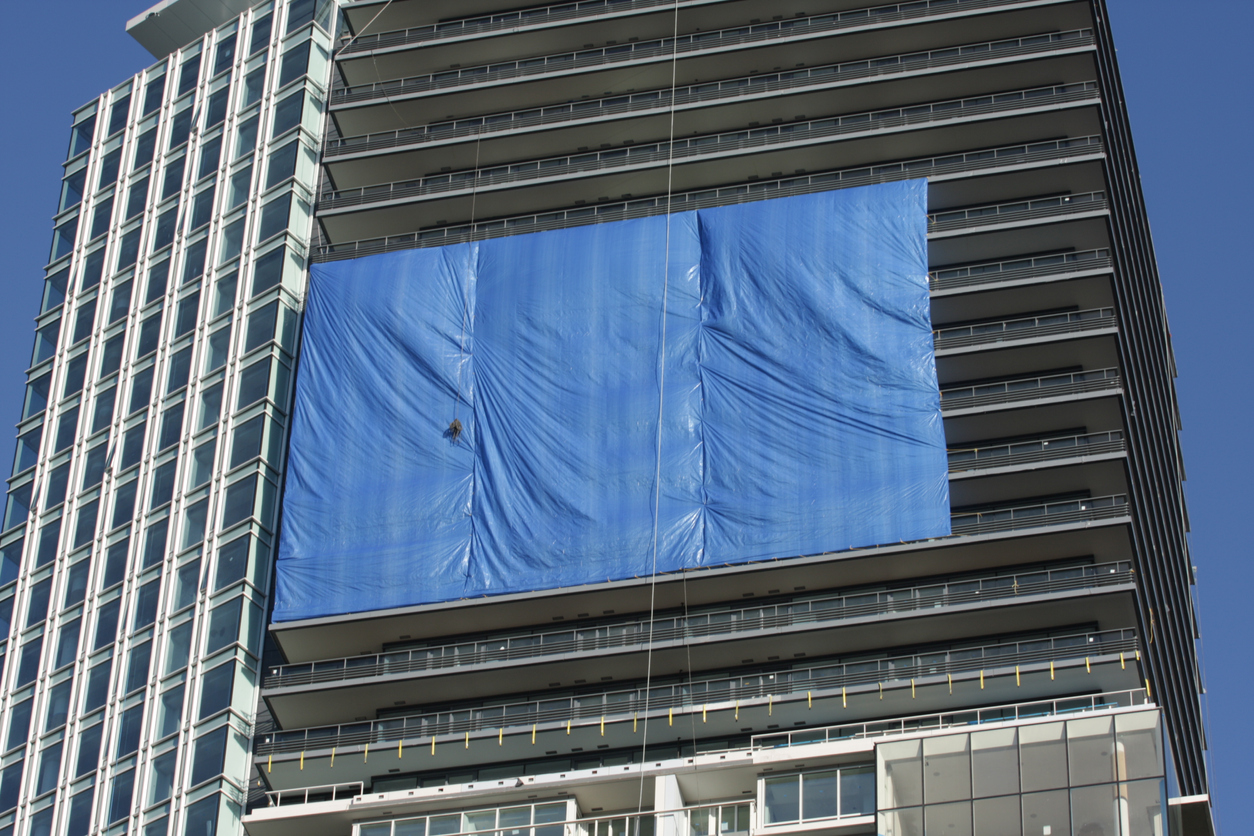(NOTE: There will not be a Tuesday @ 2 With Chip today due to the Windstorm Conference. Tuesday @ 2 will return next week)
While there are many issues that consistently form the basis of a dispute between insurers and insureds in property insurance claims (coverage issues, causation, notice requirements, etc.), one universal principal is generally accepted on both sides: The insured, if capable of doing so, has the duty to reasonably mitigate damages to reduce their loss.
This is not a novel principle. Virtually every state/insurance policy in one way or another imposes this duty on the insured. Whether relying on the common law duty to mitigate damages, or a specific provision contained in the subject policy imposing that duty, courts universally enforce the obligation to minimize losses. This is generally not an issue however, as it is almost always in the insured’s best interest to mitigate damages by making temporary roofing repairs (to protect the interior of the home) or reopening their business (to avoid additional business income losses). In other words, insureds generally have ample motivation to mitigate their own losses. But what if an insurance company attempts to use the insured’s efforts to mitigate damages against them?
The factual circumstances that give rise to this type of situation generally involve the insurer attempting to deny payment of mitigation expenses or preclude business income recovery. The first example is demonstrated in Metalmasters of Minneapolis v. Liberty Mutual,1 which was summarized in our earlier post, Understanding Business Interruption Claims, Part 34.
In this case, Metalmasters manufactured precision computer disk drives and other small machine parts. The overhead pipe carrying water ruptured during the night and flooded Metalmasters’ shop. Metalmasters was shut for nine weeks, with partial production resuming after three weeks. Metalmasters began using its clean rooms within four months after the water damage, but to produce a rust-free product, Metalmasters incurred an additional expense of $4.90 for each of 15,500 spindle assemblies, totaling $75,590, The insurer argued that this expense was not covered under the policy, but Metalmasters was able to recover the $75,590 as a mitigation cost under the Extra Expense provision of the policy. The court reasoned:
These additional production expenses were expenses of mitigation. [The Insurer] cannot have it both ways. If, as they strenuously urge, the insured has a contractual as well as a common law duty to mitigate damages, then the expenses of that mitigation must be covered. If the mitigation efforts take longer than the interruption period, then the business interruption clause cannot limit coverage to that period, since the activity is in the interest of the insurer. In this case the expense continued beyond the four weeks during which the clean rooms were inoperable. Mitigation is a duty the insured performs for the insurer’s benefit. Mitigation cost is recoverable so long as it is reasonable and less than the damages would have been without it. In this case the cost of mitigation is unquestionably less than damages would have been without the additional production expense. (Emphasis added).2
As this case demonstrates, penalizing the insured for attempting to mitigate damages is viewed poorly by the courts. A similar outcome arose in Duane Reade, Inc. v. St. Paul Fire & Marine Insurance Company.3 In this case, the court was tasked with reviewing the district court’s interpretation of a “period of restoration” clause. The insured operated a drug store that was destroyed in the terrorist attacks on 9-11. The district court ruled in favor of the insured by finding that the hypothetical period of restoration was extended until the insured resumed its operations in a “functionally equivalent” manner to its pre 9-11 operations. The district court also declared that the length of the period of restoration was tied to the time it would take to rebuild the drugstore at the World Trade Center site.
In reversing the district court’s interpretation of the period of restoration, the Second Circuit Court of Appeals determined that the “functionally equivalent” language was an incorrect interpretation. Most notably, the appellate court stated:
The Restoration Period clause establishes that BI coverage lasts only for the reasonable amount of time it would take [the insured] “exercis[ing] … due diligence and dispatch to rebuild, repair, or replace such property that has been destroyed or damaged.” Courts have consistently construed this or similar language as entitling the insured to continue to recover its lost profits until it can build a reasonably equivalent store in a reasonably equivalent location. See, e.g., Lee R. Russ, 12 Couch on Insurance §§ 183:55, 185:7 (3d ed. 1998 & Supp.2003); Beautytuft, Inc. v. Factory Ins. Ass’n, 431 F.2d 1122, 1128 (6th Cir.1970) (holding that insured’s resumption of partial operations in inferior, temporary premises did not terminate business interruption coverage); see also Anchor Toy Corp. v. Am. Eagle Fire Ins. Co., 4 Misc.2d 364, 155 N.Y.S.2d 600, 603 (N.Y.Sup.Ct.1956) (holding that insured was entitled to modernize premises upon rebuilding). The rationale behind such holdings has generally been that insureds would lack any incentive to resume partial operations in temporary locations or under other inferior circumstances in order to mitigate damages if such actions would terminate their BI coverage.4
Although the ultimate holding in Duane Reade turns on a difference in rule application, the language recited therein supports the position that attempts to mitigate damages should not terminate the insured’s business interruption coverage, as such an interpretation would punish the insured for acting in the best interest of the insurer.
Multiple courts have disfavored rulings that would disincentivize mitigation efforts by the insured. In American Medical Imaging Corp. v. St. Paul Fire & Marine Insurance Company,5 the court was tasked with interpreting whether the insured suffered from a “necessary or potential suspension.”6 A fire at AMIC’s headquarters resulted in smoke and water damage that made use of the facilities impossible. AMIC immediately rented space at an alternative site and relocated there the next day. The subject policy stated:
We’ll pay your actual loss of earnings as well as extra expenses that result from the necessary or potential suspension of your operation during the period of restoration caused by direct physical loss or damage to property at a covered location. The loss or damage must occur while this coverage is in effect and must be due to a covered cause of loss. We’ll pay your earnings and extra expense loss from the date the property is damaged until the earliest of the following:
• the date you resume normal business operations;
• as long as it should reasonably take to repair, rebuild or replace the damaged property, plus 30 consecutive days; or
• 12 months, regardless of your policy’s expiration date.
The district court concluded that because the policy required this necessary suspension, and the policy defined “operation” to mean “the kind of business activities that occur at the covered location,” the insured’s loss was not covered under business interruption as they were able to resume business operations, albeit at a less than normal level.7 Due to the resumption of business, the district court determined that there was no necessary suspension, and the insured was not entitled to coverage.
In reversing the district court’s decision, the Court of Appeals determined that such a holding would deprive the insured of any motivation to mitigate its losses. The court rationalized its position, stating “[c]continuing in business at any level would bar recovery because the insured would be carrying on the same kind of activities that occurred at the covered location. We decline to accept the suggestion that this was the intent of the parties.”8 While the policy at issue in this case imposed a duty on the insured to mitigate its losses, the court determined that the district court’s ruling lead to an anomalous result:
Under the district court’s reading, this provision would have imposed upon AMIC a duty, the performance of which would have forfeited its right to recover under the policy. We are confident that such an anomalous result was not intended and choose to read the policy terms regarding St. Paul’s duty to indemnify as consistent with AMIC’s duty to mitigate. Moreover, as appears from the earlier quoted portion of the policy, St. Paul’s obligation to indemnify continues until the resumption of normal business operations. This necessarily implies that the obligation to indemnify can arise while business continues, albeit at a less than normal level.9
This caselaw (notably across multiple jurisdictions) supports the general/universal principle that an insured exercising a duty to mitigate under the policy does not forfeit the right to recover. Imposing the duty to mitigate while simultaneously arguing that satisfying that duty terminates the right to recover under a business interruption claim is disfavored as it would once again disincentivize mitigation, and ultimately lead to an “anomalous” result.
_____________________________________________
1 Metalmasters of Minneapolis v. Liberty Mutual, 461 N.W. 2d 496 (Minn. App. 1990).
2 Id. at 501.
3 Duane Reade, Inc. v. St. Paul Fire & Marine Ins. Co., 411 F.3d 384 (2d Cir. 2005).
4 Duane Reade, Inc., 411 F.3d at 392-393.
5 Am. Med. Imaging Corp. v. St. Paul Fire & Marine Ins. Co., 949 F.2d 690, 691 (3d Cir. 1991).
6 Id. at 692.
7 Id.
8 Id.
9 Id. at 692-693.




